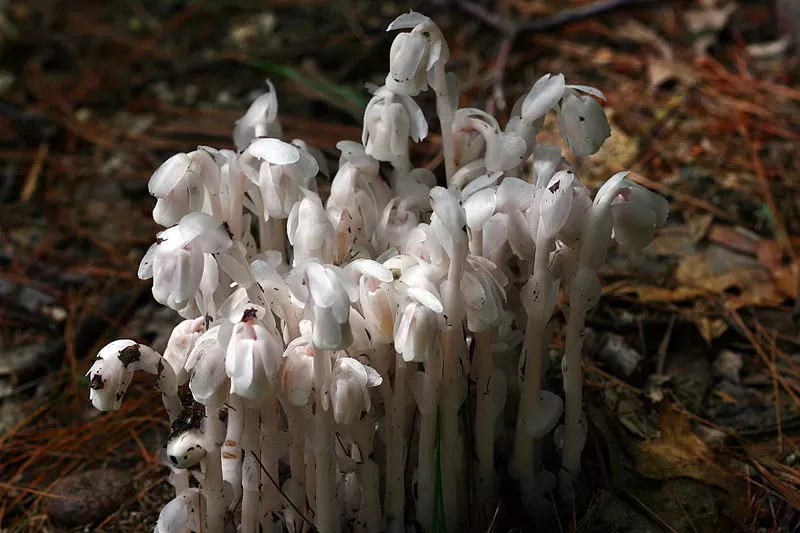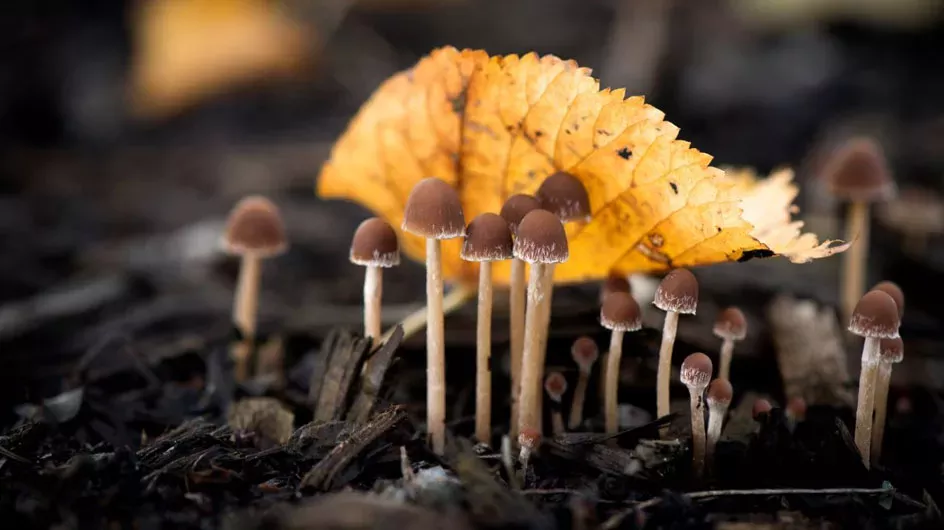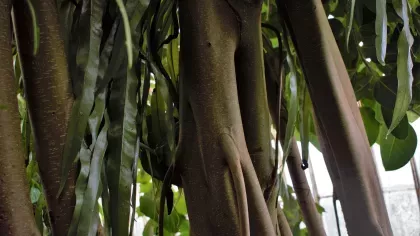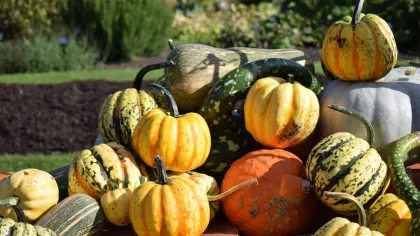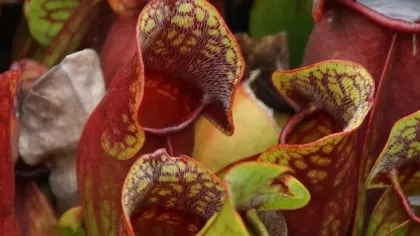28 October 2019
Top 13 spookiest plants and fungi
Step outside this Halloween and you might find some of these terrifying plants and fungi lurking in the garden.

1. Octopus Stinkhorn (Clathrus archeri)
With large red tentacles oozing sticky black slime, the reproductive structure of the Octopus Stinkhorn bears a striking resemblance to the Demogorgon from Stranger Things.
This fungal monster hatches from an egg that grows amongst leaf litter and wood-chip mulch. It is native to Australia and New Zealand but was introduced to Britain and is now frequently found in the south of England.
Alongside its terrifying appearance, the Octopus Stinkhorn reeks of rotting flesh. This is to attract flies that help disperse its spores and produce more fungi.
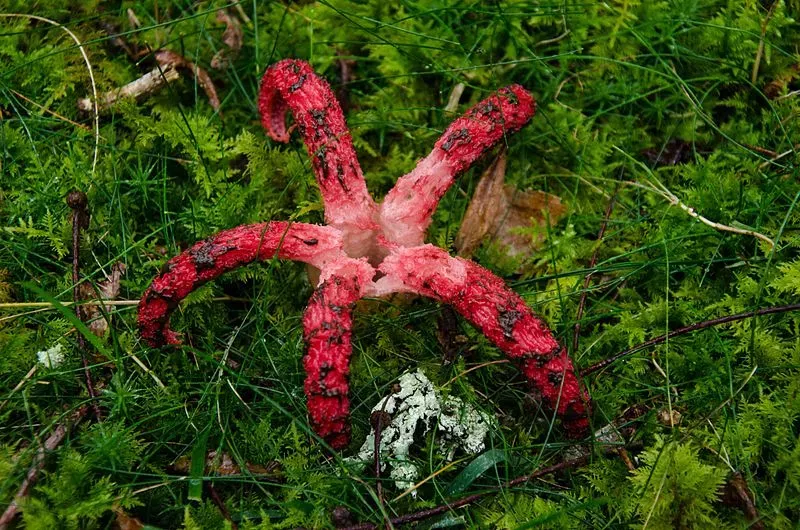
2. Zombie Fungus (Ophiocordyceps)
Insects and spiders fall victim to this group of deadly parasitic fungi that are mostly found in tropical rainforests.
Ophiocordyceps fungi grow rapidly inside the bodies of their hosts, feed on their insides and take over their behaviour.
The ‘zombie’ insects are driven to climb up a plant and hang on. From there, the insect dies, and the fungus sends out long spikes that pierce through the corpse to release spores that infect more unfortunate insects.
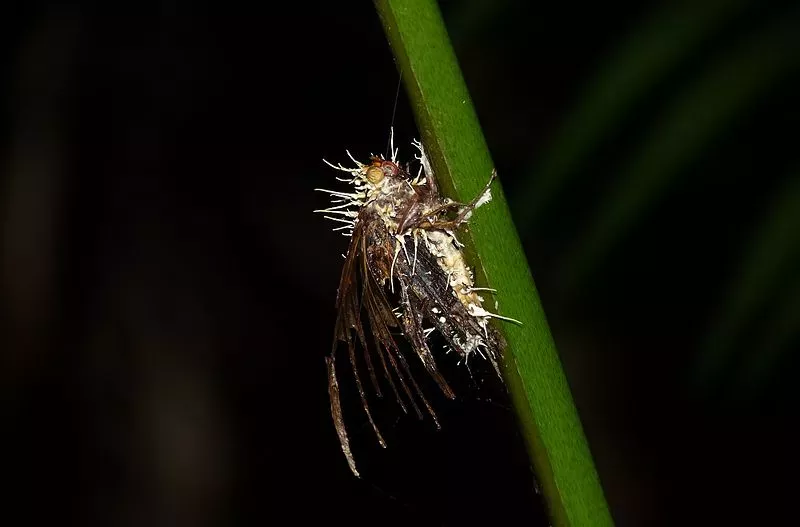
3. Devil’s Tooth (Hydnellum peckii)
In deep, dark and dense forests in North America and Europe, you could stumble upon large bleeding teeth in the undergrowth. These are the reproductive structures of the Devil’s Tooth fungus.
Despite appearances, this fungus won’t bite. Instead, it lives in a mutually beneficial relationship (mutualism) with conifer trees. The Devil's Tooth fungus helps the tree gain nutrients from the soil, and in return, the tree provides the fungus with carbohydrates from photosynthesis.
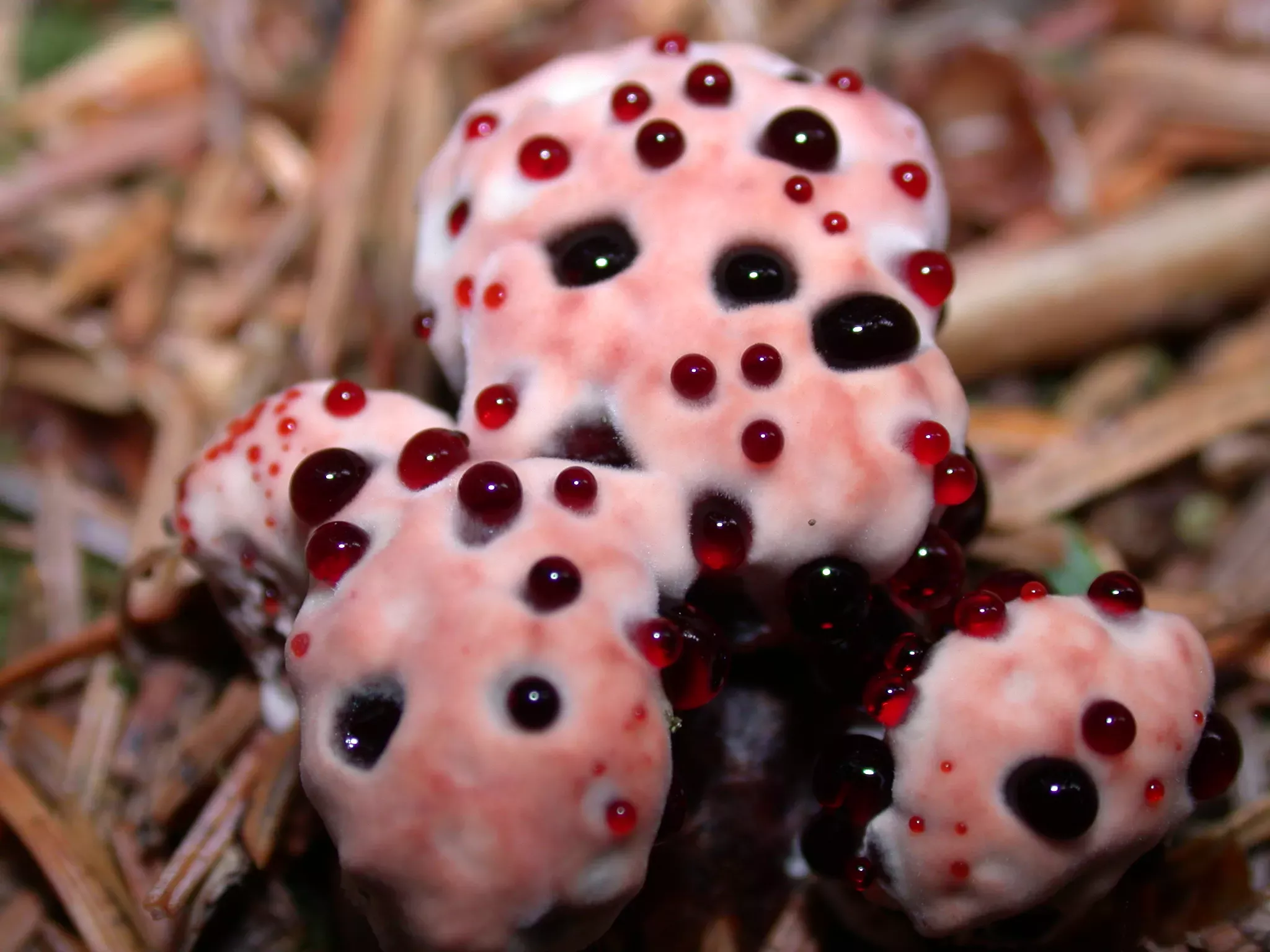
4. Doll’s Eyes (Actaea pachypoda)
Have you ever felt like something is watching you as you wander through a forest?
This could be the white baneberry that is native to eastern North America. Its highly toxic and heart attack-inducing berries look like eyeballs on fleshy stems.
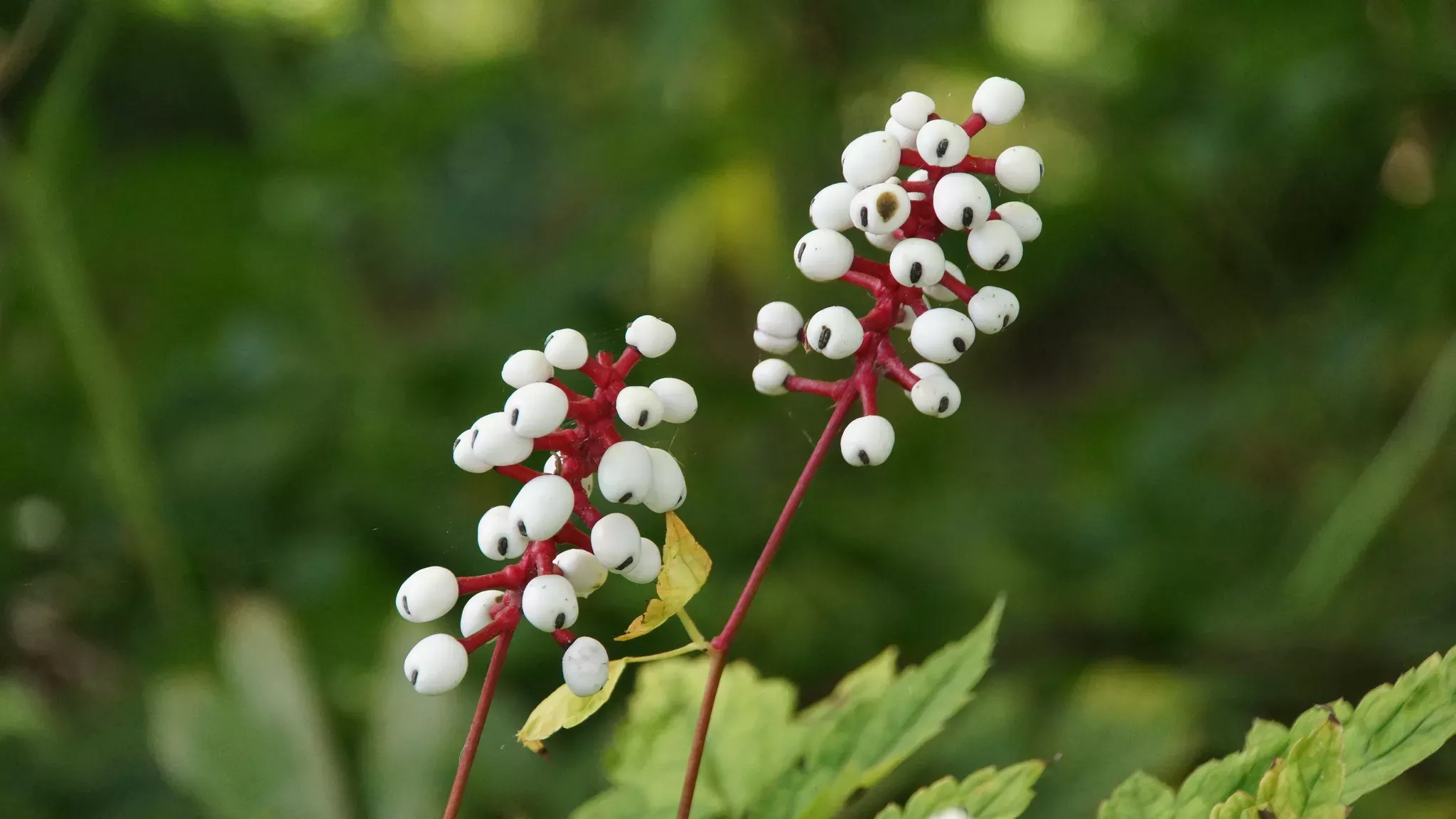
5. Dead Man’s Fingers (Xylaria polymorpha)
This fungus looks like fingers from a corpse reaching up from the soil for rotting tree stumps. It is a saprotrophic fungus, which means it lives and feeds on dead and decaying matter.
Commonly found in the UK, the Dead Man’s Fingers fungus could be creepy company on a woodland walk.
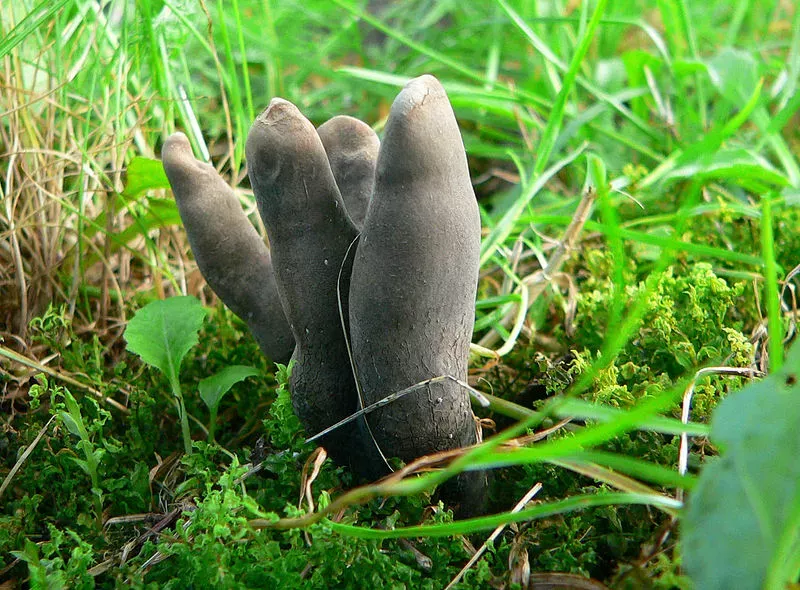
6. Tropical Pitcher Plants (Nepenthes)
Nepenthes is a group of carnivorous plants mainly found in Southeast Asia that include some species that feed on whole rats.
The deep cup-shaped leaves of Tropical Pitcher Plants function as traps. Unsuspecting insects and small rodents that are attracted by sweet-smelling nectar and bright colours, get caught in the pitcher and are unable to escape. They drown in a puddle of digestive liquid and the nutrients from their bodies are absorbed by the pitcher plant.
Come see pitcher plants for yourself at the Princess of Wales Conservatory at Kew.
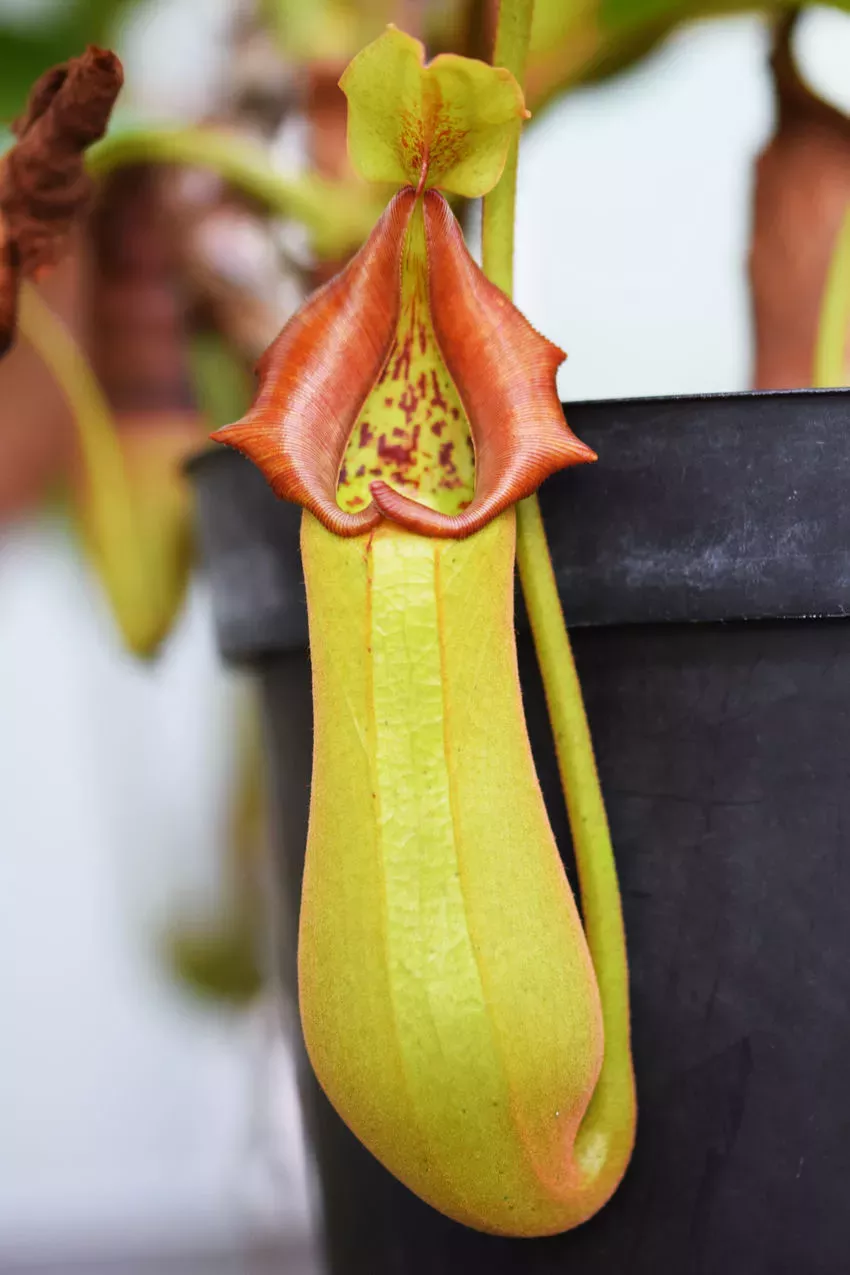
7. Strangler Fig
Given the Spanish nickname ‘matapalo’ (tree-killer), Strangler Figs are tropical and subtropical plant species which ‘strangle’ their host tree.
The roots of Strangler Figs constrict the trunk and roots of the host tree, cutting off its nutrient and water supply, resulting in death.
You can pay the Strangler Figs a visit at the Palm House at Kew and read more about them here.
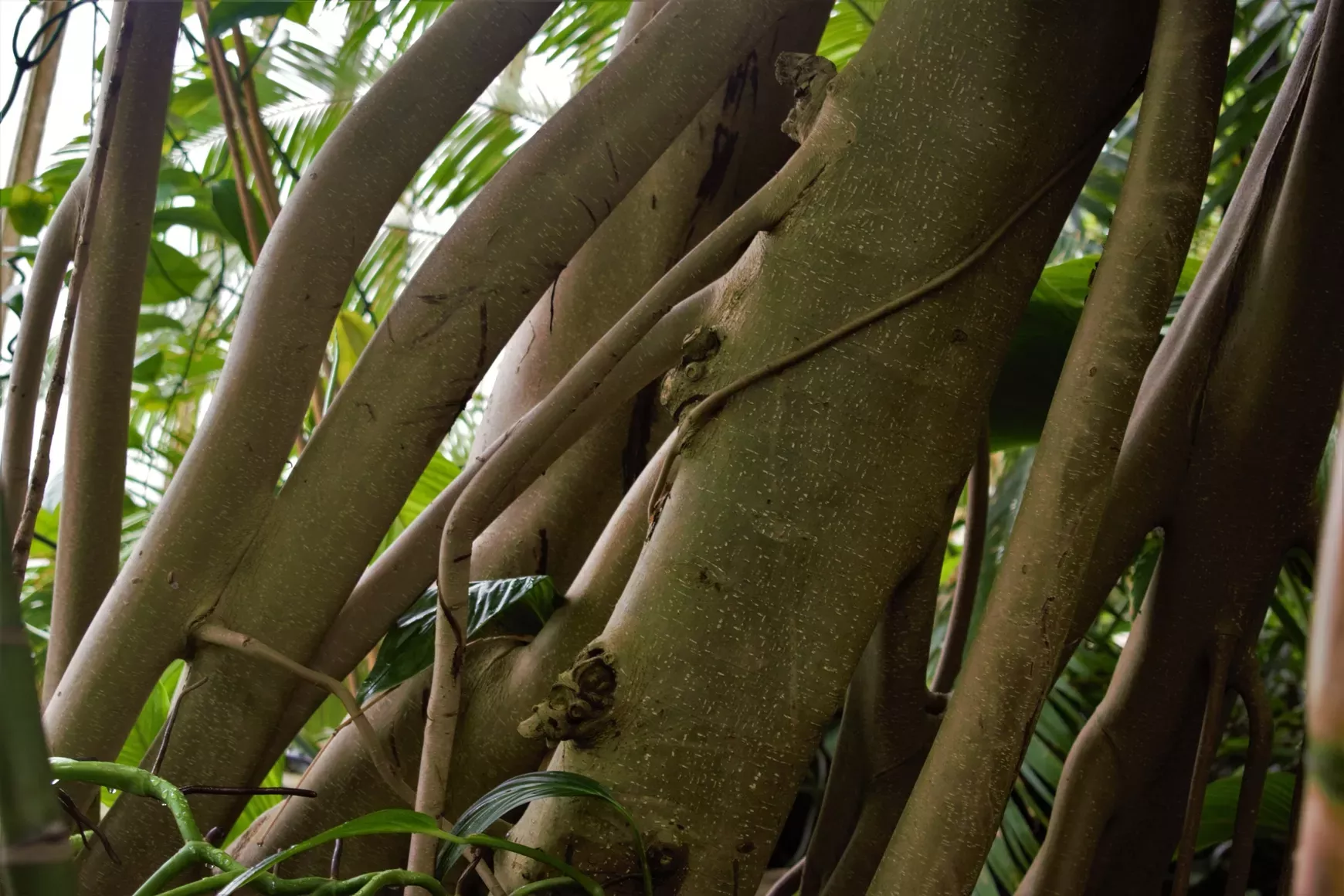
8. Mycena manipularis
The bioluminescent Mycena manipularis fungus is visible at night by its eerie pale green glow in forests in Australasia, Malaysia and the Pacific Islands.
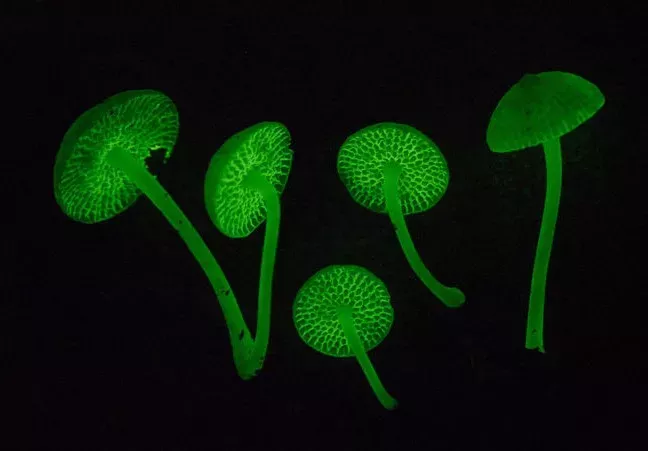
9. Purple Jellydisc (Ascocoryne sarcoides)
These fungal clusters of purple discs look like intestines splattered against trunks and branches of dead trees.
Purple Jellydisc is found across North America and Europe and is very common and widespread throughout Britain.
This is another saprotrophic fungus, so dead and decaying tree matter would make up the contents of these gruesome intestines.
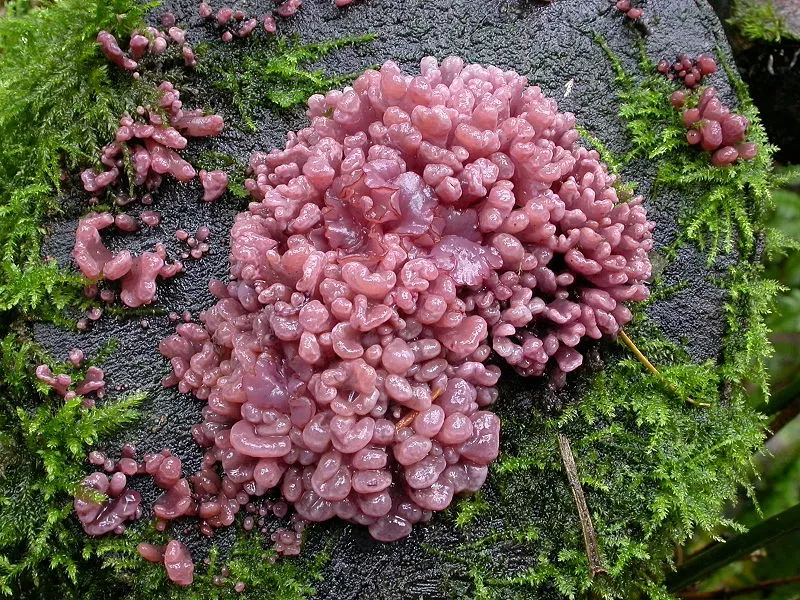
10. Black Bat Flower (Tacca chantrieri)
In the damp and dark under-story of tropical rainforests, the Black Bat Flower can easily be mistaken for bat wings with whisker-like tendrils.
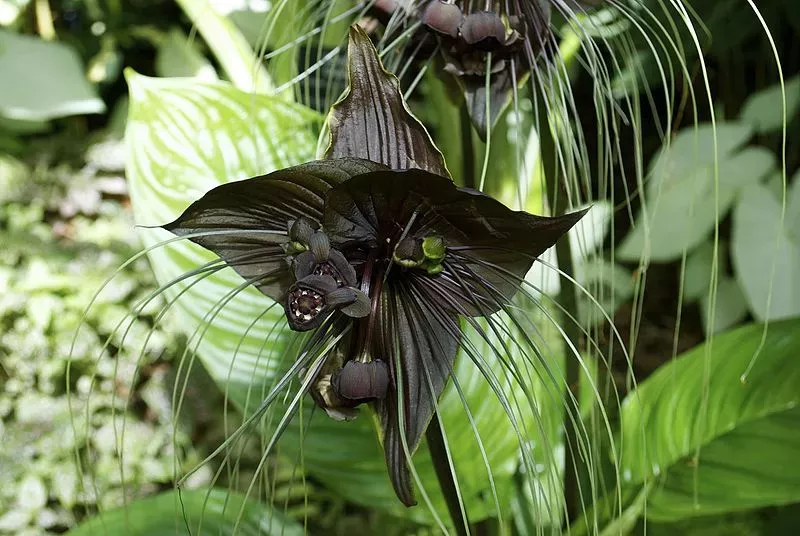
11. Snapdragon seed pod (Antirrhinum majus)
The Snapdragon, or Dragon Flower, is a popular garden plant. Its common name derives from the resemblance the flower has to a dragon’s head.
Once the flower dies, it leaves behind a seed pod that terrifyingly resembles a skull.
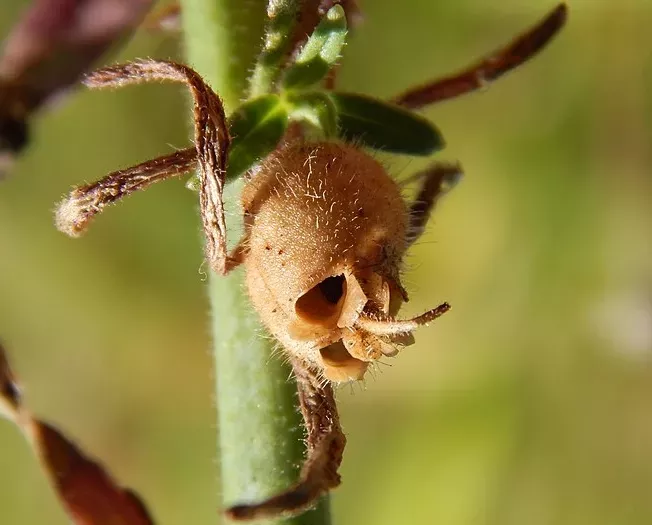
12. Jelly Ear (Auricularia auricula-judae)
Another character in the body part horror show is the Jelly Ear fungus.
Found worldwide growing upon wood in damp, shady locations, Jelly Ears are often picked for Chinese cuisine and medicine.
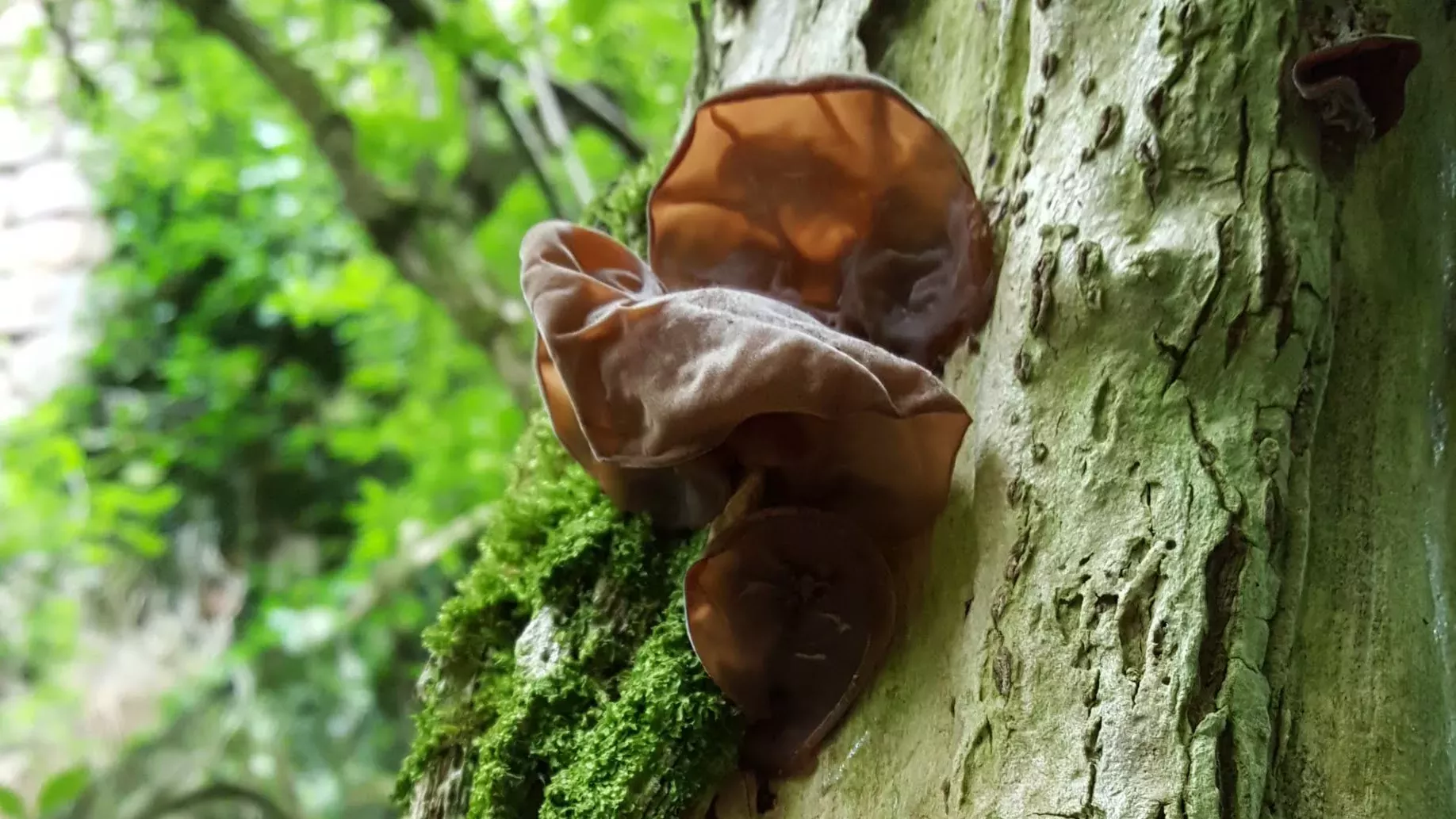
13. Ghost Plant (Monotropa uniflora)
The Ghost Plant can be found thriving in the darkness of the forest understory throughout the United States and Canada.
Unlike most plants that obtain their energy from the sun, the ghost plant is a parasite that takes nutrients from fungi.
